The 1.4-million-year-old rocks may have belonged to Homo erectus, and they shed light on migrations of human ancestors, a new study suggests
Will Sullivan
Daily Correspondent
:focal(960x411:961x412)/https://tf-cmsv2-smithsonianmag-media.s3.amazonaws.com/filer_public/dc/3f/dc3f828a-e6b1-4503-9488-ce62954969e7/garba_et_al_media_fig_03.jpg)
Stone tools dug up in western Ukraine date to about 1.4 million years ago, making them the earliest evidence of human presence in Europe, researchers report Wednesday in the journal Nature. While modern humans likely didn’t make the tools, researchers suggest the closely related species Homo erectus did.
“Confidently dated early hominin sites are scarce in Europe,” Toshiyuki Fujioka, a geochronologist at the National Research Center on Human Evolution in Spain who did not contribute to the findings, tells Live Science’s Charles Q. Choi. “This study provides a much-needed, reliably dated chronological site to add fuel to our discussion on ancient human migration.”
The tools, created from volcanic rock, put a new pin in the map of human ancestors’ migrations on the continent. Researchers had previously found evidence of early humans in Georgia, at the border of Europe and Asia, that dates to 1.8 million years ago. And in France and Spain, the first evidence of hominins dates to 1.1 million to 1.2 million years ago. The new artifacts—which were found between these two other sites—support the theory that human ancestors spread from east to west into Europe at this time, the study authors write.
/https://tf-cmsv2-smithsonianmag-media.s3.amazonaws.com/filer_public/6c/78/6c789999-0190-46e3-b980-d4e3d66a57da/garba_et_al_media_fig_08.jpg)
“Until now, there was no strong evidence for an east-to-west migration,” Roman Garba, first author of the study and an archaeologist at the Czech Academy of Sciences, says to Nature News’ Giorgia Guglielmi. “Now we have it.”
The first human ancestors expanded out of Africa around 2 million years ago. They reached southern Eurasia at least 1.75 million years ago and southeast Asia around 1.6 million years ago, per the Australian Museum.
Archaeologists found the stone tools at a site called Korolevo in western Ukraine, near the country’s modern borders with Romania and Hungary, according to a statement from the Czech Academy of Sciences. Scientists have been digging at the site since the 1970s and found 33 artifacts in its oldest layer of sediment, which hadn’t been dated, writes Science’s Bridget Alex.
But the team determined the age of this layer, which contained the stone tools, using a technique called cosmogenic nuclide dating. When cosmic rays, or high-energy space radiation, hit exposed rock on Earth’s surface, they can create radioactive isotopes. These isotopes decay at known rates once they are buried underground, serving as a clock researchers can use to determine when the tools were buried. The team measured isotopes in quartz to date the soil to 1.4 million years old.
Based on this age, researchers hypothesize the tools were made by Homo erectus, a hominin species that lived between 1.89 million and 110,000 years ago—the earliest humans with body proportions similar to those of modern humans. But without fossil remains to confirm H. erectus was at the site, “we can’t be sure,” Garba tells Christina Larson of the Associated Press (AP).
The dates “appear to be highly reliable,” Véronique Michel, a geochronologist for the National Center for Scientific Research in France who did not contribute to the findings, tells Science.
“I think this new paper nicely fills a gaping hole in our current knowledge of early human migrations into Europe,” Richard Roberts, a human evolution researcher at the University of Wollongong in Australia who was not involved in the research, says to Live Science. “More well-dated sites are needed to increase our confidence in when Europe was first colonized and by which routes.”
/https://tf-cmsv2-smithsonianmag-media.s3.amazonaws.com/filer_public/f6/f7/f6f75908-7448-47d4-bed7-1fbe93f79b40/gh_8niowoaakuek.jpeg)
Fabio Parenti, an archaeologist at the Federal University of Paraná in Brazil who did not contribute to the findings, tells Science that the study is “quite weak”—the artifacts in the paper are badly described, he tells the publication, and the dates’ error ranges overlap with more recent sites in Europe.
The Korolevo site hasn’t been damaged since Russia’s invasion of Ukraine, but it has become overgrown with vegetation, says Garba, who visited the site last year for the first time since the 2022 invasion, to Nature News.
Few scientists can currently conduct field research in Ukraine due to travel restrictions or because they have fled the country, Vitaly Usyk, a co-author of the study and archaeologist affiliated with the National Academy of Sciences of Ukraine, says to Nature News.
Miguel Lo Bianco
Thu, March 7, 2024

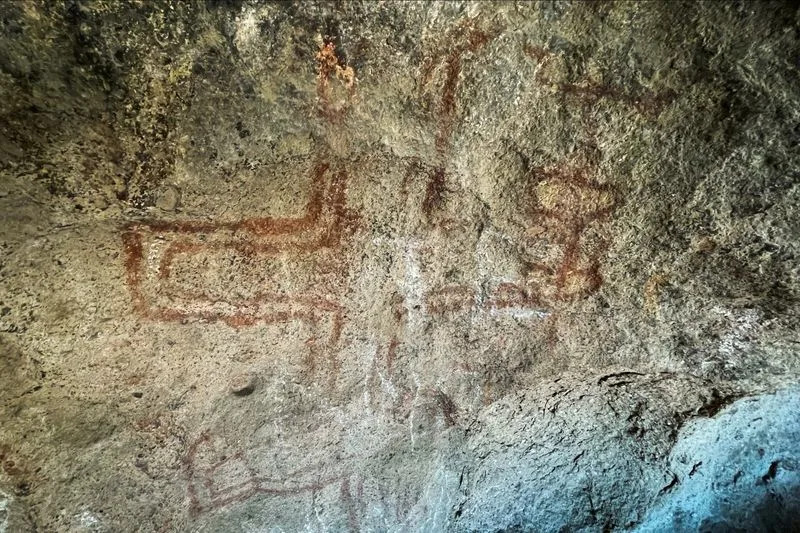

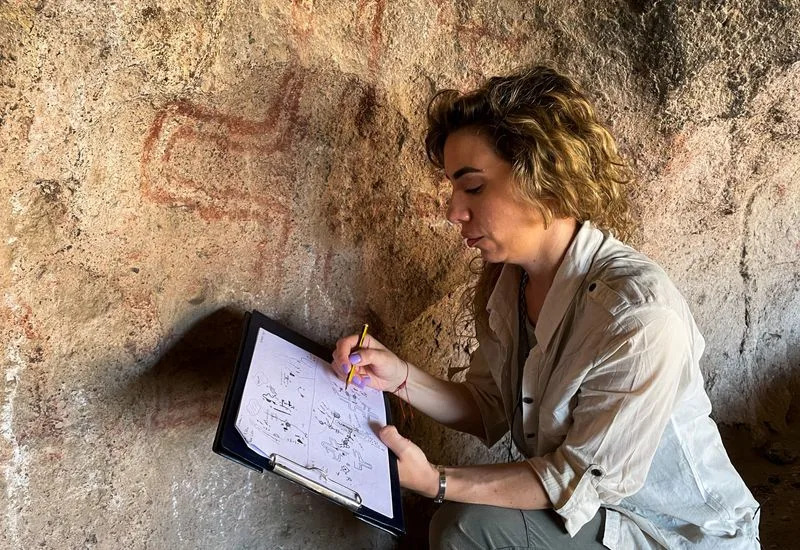
By Miguel Lo Bianco
NEUQUEN, Argentina (Reuters) - Archaeologists have discovered the earliest dated cave paintings in South America in Argentine Patagonia, dating back 8,200 years.
The 895 paintings were found by Argentine and Chilean archaeologists in the Huenul 1 cave, a 630 square meter rock shelter located in the province of Neuquen, some 1,100 kilometers (684 miles) southwest of the capital Buenos Aires.
"We were able to date four black peniform patterns that were drawn in charcoal. These proved to be the earliest direct dating of cave paintings in South America," said Dr. Guadalupe Romero Villanueva, author of the research published in the Science Advances journal.
The Argentinean archaeologist said the discovery indicates that the production of cave art began in the Huenul cave about 8,000 years ago and that the practice of painting the particular pattern seen in the cave was sustained for a period of at least 3,000 years.
The discovery provides evidence of the artistic ability and cultural transmission of the hunter-gatherer societies which inhabited the region during the middle Holocene, a period roughly from 7,000 to 5,000 years ago, and reveals the socioecological resilience to climate, as well as serving as a means of communication between scattered populations.
"We believe these images in particular were part of a resilient response of the mobile hunter-gatherer groups that occupied this cave and the desert environments of northern Patagonia to the climatic challenge of a period of extreme dryness that occurred during the middle Holocene," said Romero Villanueva, a researcher at the National Council for Scientific and Technical Research of Argentina.
Villanueva said there are other places in South America that could have older cave paintings, but which only have relative dating, like Argentina's Cueva de las Manos, with cave paintings dating back 9,500 years.
(Reporting by Miguel Lo Bianco; Writing by Steven Grattan; Editing by Stephen Coates)
The National Trust is working with TV show Time Team on the two-year research project
Sam Russell
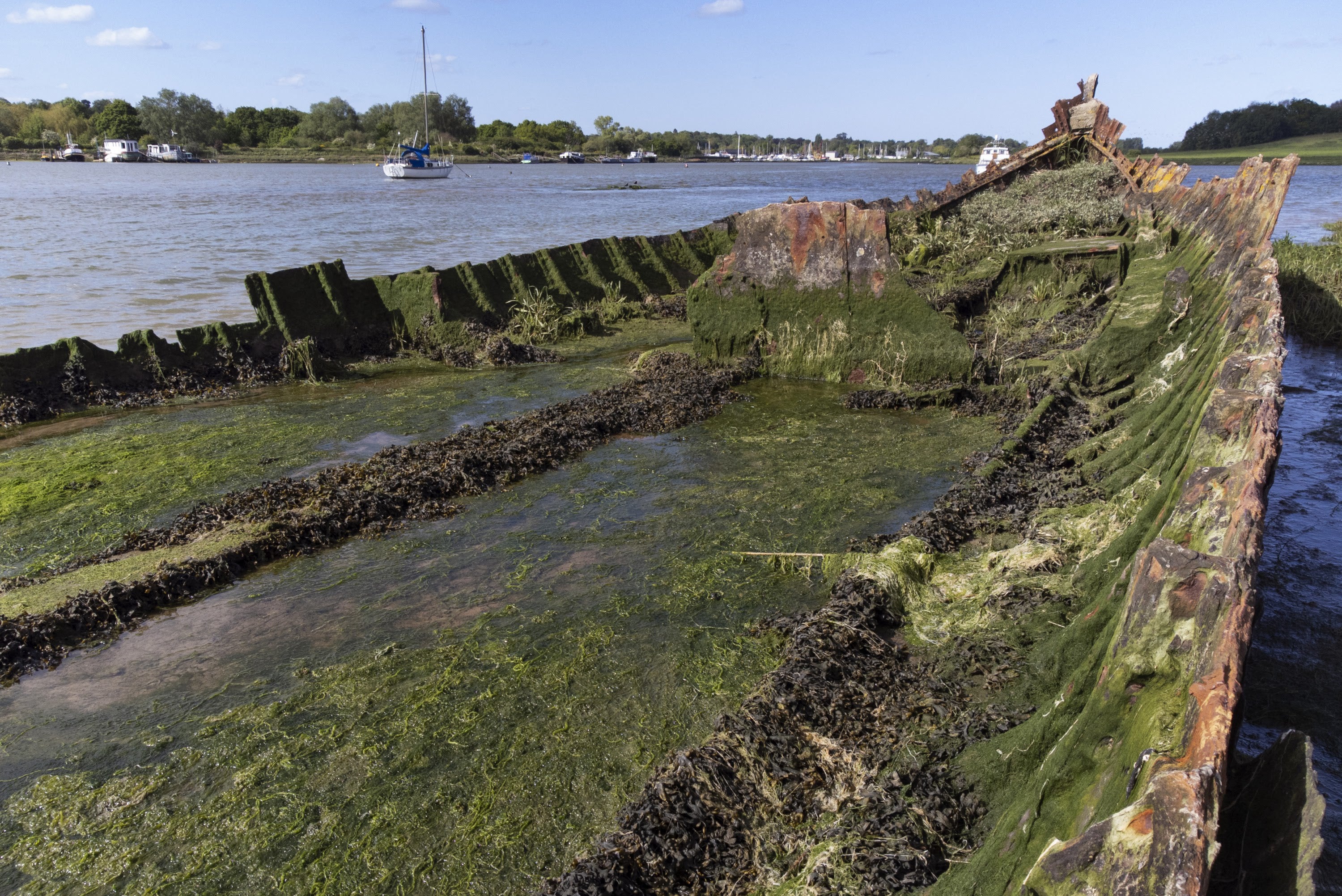
The steamship Lady Alice Kenlis on the National Trust’s Sutton Hoo estate
(James O. Davies/Historic England/PA Wire)
A new dig is to be carried out at Sutton Hoo, which is known for the Anglo-Saxon ship burial discovered in 1939.
Archaeologists hope to build a greater understanding of the Suffolk site and learn more about an Anglo-Saxon cemetery which was discovered in 2000 during construction of a visitor centre.
The National Trust is working with TV and online show Time Team on the two-year research project, with a dig planned to begin June.
The conservation charity said the project will build on work by Time Team in 2021 and 2022, when ground penetrating radar surveys were carried out of the Royal Burial Ground and Garden Field.
Angus Wainwright, regional archaeologist for the National Trust, said: “Time Team’s geophysical survey identified several mysterious features in Garden Field.
“We want to determine if they are archaeology or geological features.
“To do this we are carefully planning for an archaeological dig in June.
“Garden Field has an extraordinary amount of archaeology in it, from prehistoric fields and possible burial mounds through to Roman settlements and an Anglo-Saxon cemetery, but who knows what else may be hidden there.
“We know from previous work in this field, it’s likely we will find prehistoric flint tools and fragments of Anglo-Saxon objects from burials scattered through the plough soil, but working out what the mysterious geophysical anomalies are will be our focus.
“We hope to find evidence of the deep-time prehistory of Sutton Hoo and perhaps more information about the Anglo-Saxon cemetery, which we first discovered in 2000 when we were building the visitor centre.
“The approach will be painstaking, recording all the finds in 3D from the ground surface, down through the plough soil until we reach the undisturbed archaeology.”
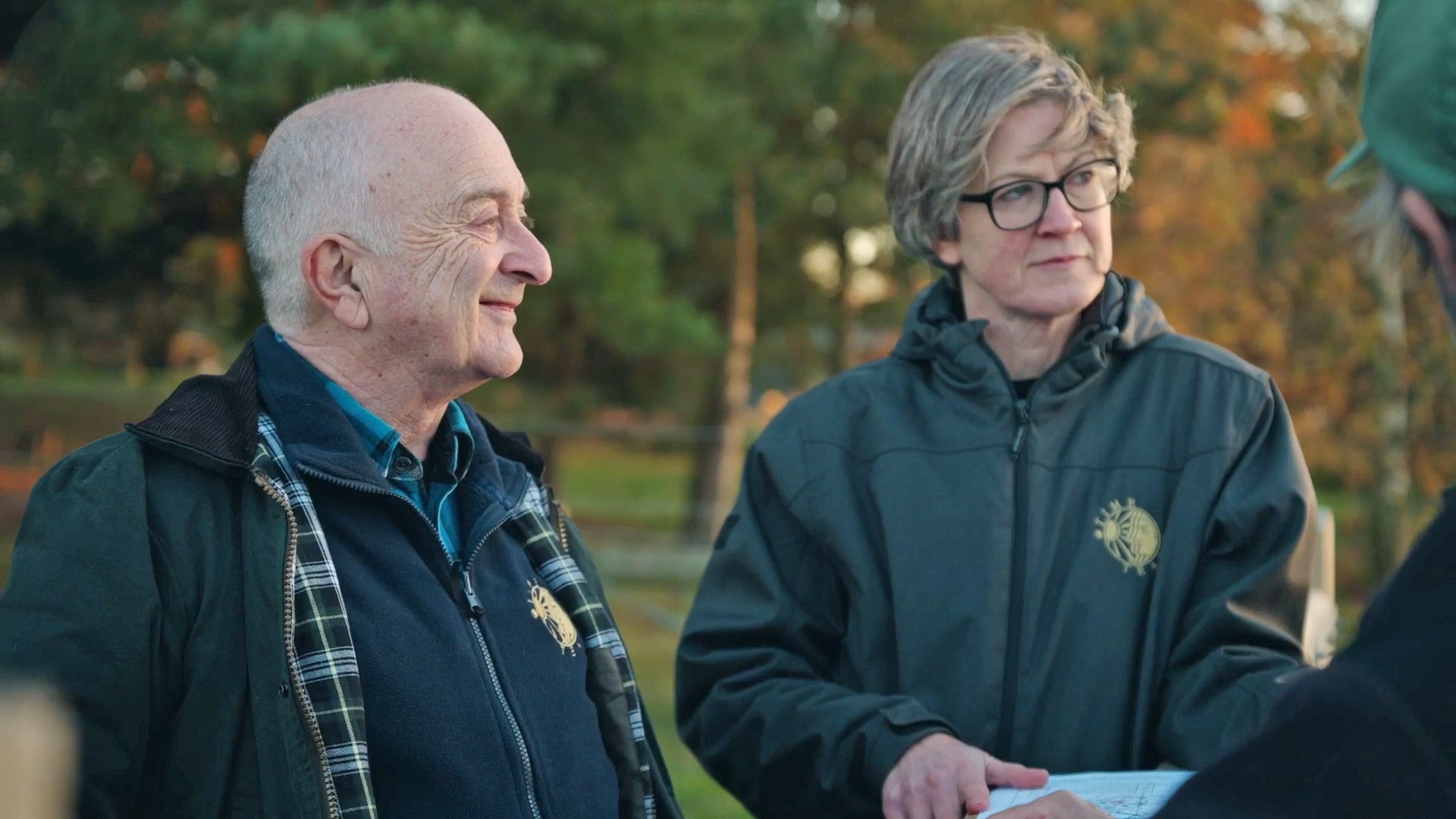
Tony Robinson and Dr Helen Geake at Sutton Hoo in Suffolk
(Time Team/PA Wire)
The ship burial is thought to have been the final resting place of King Raedwald, who ruled East Anglia in the seventh century.
Mr Wainwright said the 1939 discovery “not only stunned the archaeological world but set the scene for further exploration”.
“Later archaeological campaigns at Sutton Hoo helped solve mysteries left by the original dig and revealed more about life in the Anglo-Saxon kingdom of East Anglia,” he said.
“We can’t wait to see what this next chapter will bring.”
Members of the 1980s archaeological team who carried out a dig on the Royal Burial Ground will be involved in the latest project.
Tim Taylor, Time Team’s series producer and creator, said: “We are incredibly thrilled to expand our relationship with Sutton Hoo, delving deeper into the history of one of Britain’s most iconic sites.
“The story of Sutton Hoo has captured the world’s imagination, as we can see by the success of the award-winning film The Dig, and we hope to reveal yet another exciting chapter.”
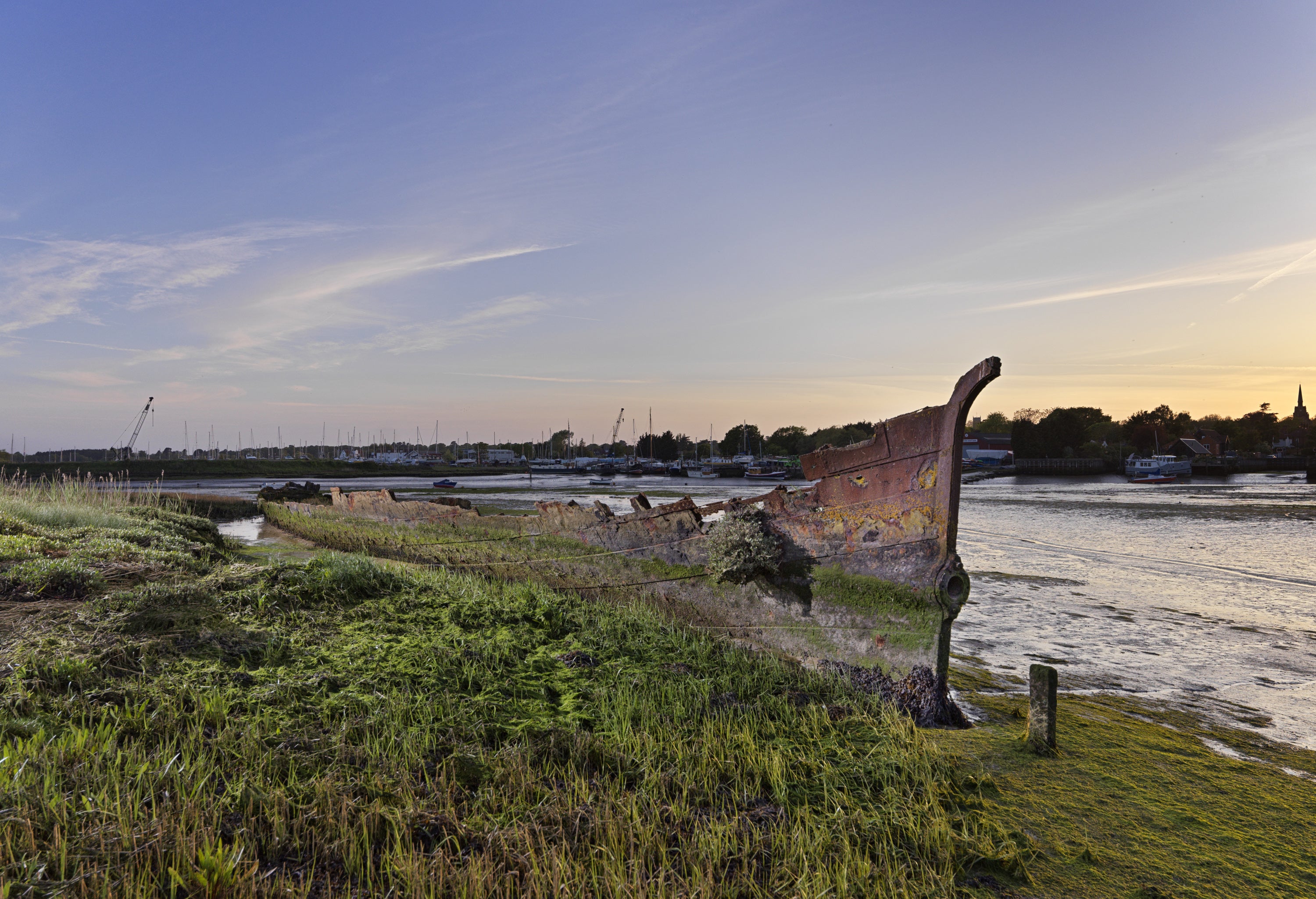
Lady Alice Kenlis on the National Trust’s Sutton Hoo estate in Suffolk
(James O. Davies/Historic England/PA Wire)
Time Team expert Helen Geake said: “It feels so exciting that we can uncover a new area, a new part of the landscape.
“It’s a tantalising piece of the jigsaw puzzle that we’ve always known a bit about, but to be able to find something new and tangible would be truly amazing.”
Time Team will document the investigation, culminating in a documentary presented by Sir Tony Robinson.
Sir Tony said: “In all my years exploring archaeology, I never, ever thought that I would get a chance to be involved with an excavation of Sutton Hoo – that is so exciting.”
The National Trust will be working with archaeology volunteers to help support the project and there will be opportunities for visitors to see archaeology in action when the dig takes place.
Lavish Tomb Reveals Spine-Chilling Ritual of Ancient Coclé Culture
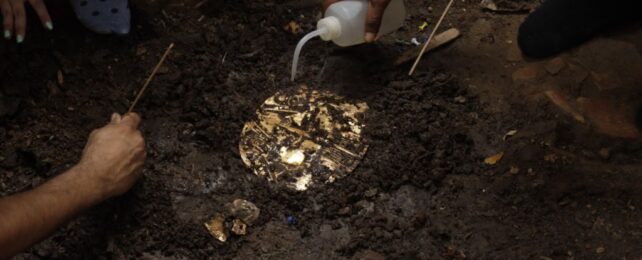 Gold plate from Coclé tomb. (Panama Ministry of Culture)
Gold plate from Coclé tomb. (Panama Ministry of Culture)The afterlife could be a lonely place with your loved ones staying behind in the land of the living.
In the ancient Coclé culture, which existed in Panama between 200 BCE and 1550 CE, elite individuals didn't have to worry about eternal solitude. The tomb of a young Coclé lord from roughly 1,200 years ago reveals the spine-chilling reality for any surrounding company when a powerful leader dies.
In a specific section of the Rio Grande Valley, archaeological evidence from ancient cemeteries suggests that Coclé chiefs and nobility were sometimes buried alongside their companions, such as their favorite wives or servants, who were sacrificed as part of the funeral.
The tomb of the Coclé lord, which was originally found in 2011 in El Caño Archaeological Park, contains piles of gold artifacts and the bones of up to 31 other people.
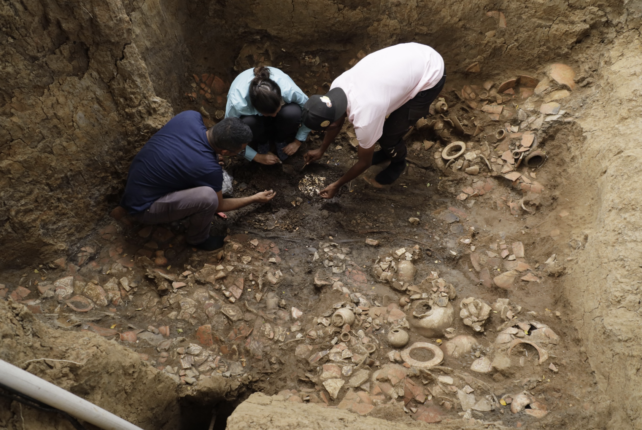
The elite individual's own body was interred face down on top of a female body, which experts say was a common tradition in the culture.
Over the years, archaeologists unearthing the ancient enclosed cemeteries of El Caño and a nearby spot called Sitio Conte have found numerous tombs that hold more than one body. But the burial of the young lord in El Caño around 750 CE is especially lavish.
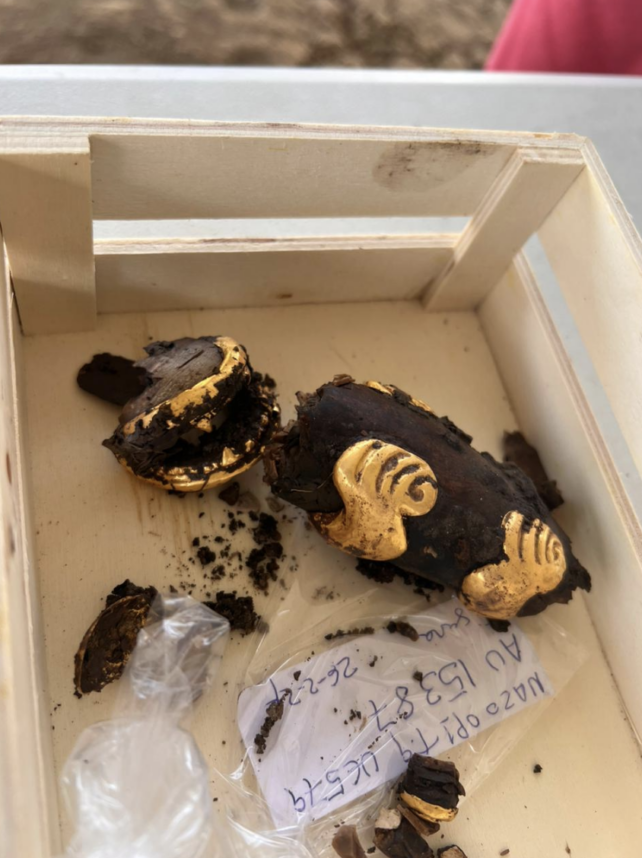
The luxury items found in his tomb probably had spiritual significance. Among shards and shards of pottery lie two belts made of gold beads, four bracelets, two earrings in the shape of a man and a woman, an earring in the shape of a crocodile, a beaded necklace, five earrings made from sperm whale teeth with gold covers, two gold plates, two bells, skirts and bracelets made of dog teeth, and a set of flutes made from bone.
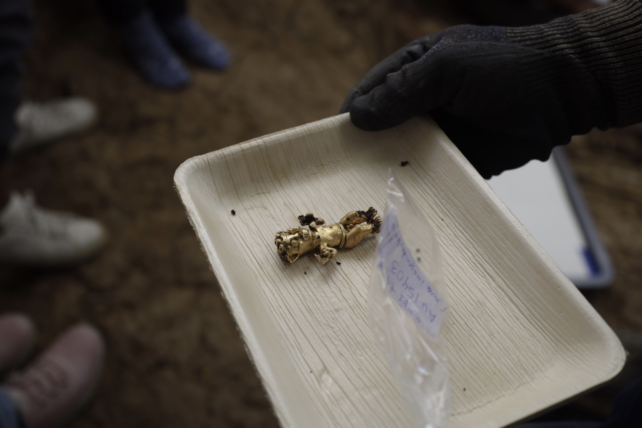
The excavation of the site is not yet complete, which means the numbers of individuals buried in that one single tomb could still change. The range sits somewhere between 8 and 32, but it's hard to say for sure which bones go with which person without genetic analysis.
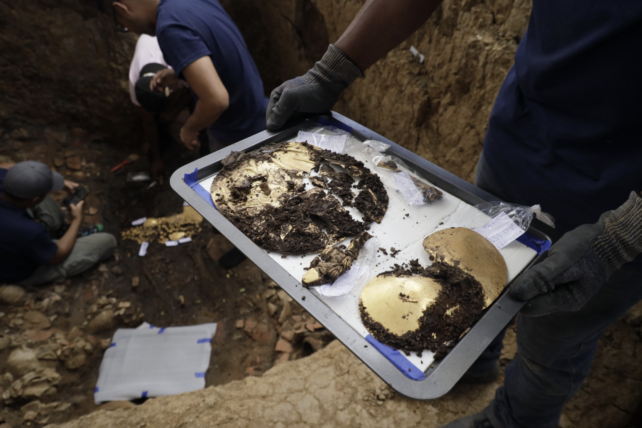
Julia Mayo, leader of the archaeological project, and her team have shared some initial findings and photographs of the tomb on the website for Panama's Ministry of Culture.
With further analysis, the archaeologists hope to uncover cultural, spiritual, and political elements of the mysterious Coclé culture and their hierarchical ways of life.
No comments:
Post a Comment